Minneapolis and North Yorkshire
by TIM HICKS
~~~~~
Introduction
All our readers will be aware of the tragic events in Minneapolis, where Mr George Floyd died after a police officer restrained him by using a chokehold that involved kneeling on his neck.
I have not published a photograph of Mr Floyd being restrained because I think it would be distressing and, in accordance with the high ethical standards the NYE sets for itself, I wish to afford Mr Floyd dignity in death.
Other than commenting that following video footage taken on a mobile ‘phone by a passer-by, four police officers have been summarily dismissed from the Minneapolis Police Department, arrested, charged with serious offences and remanded in custody, I do not want to comment further. This is because all four men are entitled to a fair trial and I am concerned that the coverage of this event and the subsequent rioting will prejudice their opportunity of having a fair trial, by preventing the selection of a jury that does not already have a pre-conceived view of their guilt. In this respect, some of the public comment by journalists and senior public figures has in my belief been completely irresponsible and contrary to the interests of justice.
There is one area, however, that is relevant to the NYE and to the UK and that is the impact of citizen journalism on this case.
The Impact of Citizen Journalism in the United States
Nowadays, the technology available to ordinary members of the public through their cell phones is better than was available to professional news crews ten or fifteen years ago. This, coupled with the ability to upload footage on the internet, has empowered ordinary citizens to confront police misconduct. This has become known as citizen journalism:
Citizen journalism is based upon public citizens playing an active role in the process of collecting, reporting, analyzing, and disseminating news and information.
[Source: Wikipedia]
The death of Mr Floyd only became widely known because a member of the public acting as a citizen journalist took video footage of his arrest and death with his smart ‘phone and then uploaded it.
The resulting public outrage led to the arrest of the four policemen involved in the death (pictured above). One has been arrested for causing Mr Floyd’s death and the others for aiding and abetting him. None of the police officers present made any attempt to restrain the arresting officer from applying the chokehold that killed Mr Floyd.
Had it not been for the footage taken by a citizen journalist, it would have been impossible to bring charges against any of the policemen involved. I therefore suspect that this death would have been swept under the carpet. The arrest of these four policemen is therefore a considerable success for citizen journalism, which demonstrates the power of public photography/filming and citizen journalism as a force for good in society.
This similar incident shows two policemen from Kansas City allegedly using excessive force. Video here. Both officers were subsequently charged, (report here) based on the evidence provided by a citizen journalist.
Impact of the Floyd case on Policing in the UK
In the UK, we have had a similar case involving the death of an innocent man caused by a policeman that was exposed by citizen journalism.
In April 2009, Mr Ian Tomlinson died after being pushed to the ground by PC Simon Harwood of the Metropolitan Police. Mr Tomlinson was walking home and innocently wandered into the G20 Summit protests. He was walking away from the police with his hands in his pockets, when PC Harwood hit him on the back of his leg with a baton and pushed him in his back forcing him to fall forward. He subsequently died. None of the other police constables attempted to restrain or arrest PC Harwood. Nor did they report his conduct.
Footage showing the full chain of events leading up to Mr Tomlinson’s death including PC Harwood attacking a TV cameraman here. This led to Harwood’s dismissal from the Metropolitan Police, but he was not charged with any offence and kept his police pension. No action was taken against the other officers present who failed to restrain or arrest PC Harwood, or even to report his conduct afterwards.

PC Simon Harwood (left) and his victim, Mr Ian Tomlinson (deceased) (right)
As you can see from the initial police statement here, mainstream journalists were very effectively manipulated by the Metropolitan Police to conceal the circumstances of Mr Tomlinson’s death after he was assaulted by PC Harwood. (See Wikipedia article Death of Ian Tomlinson). Fortunately, as with the death of Mr Floyd, Mr Tomlinson’s death was caught on film by a citizen journalist. It was only thanks to this (video here) that the truth emerged five days later. Guardian report Citizen Journalism counters Police propaganda here.
Had it not been for citizen journalism, Harwood would probably still be a police officer and would have suffered no consequences for his actions.
This video clip here courtesy of the Daily Mail shows a Constable from the Metropolitan Police punching a man who is pinned on the ground by four police officers.
This Guardian article describes how doubt has been cast on the official version of events surrounding the fatal shooting of Mark Duggan in London in 2011, because of forensic technology and film taken by a citizen journalist from a balcony overlooking the shooting. This footage was then given to the BBC and is sometimes erroneously called the “BBC footage”. It can be viewed in this BBC article here.

Still image from citizen journalism footage taken from a balcony showing the aftermath of the shooting of Mark Duggan
The Police response to Citizen Journalism
This video gives police guidance on the law and photographers. The College of Policing guidance on media relations is here. The Metropolitan Police force policy on police powers and photography is here. It is a very good summary of the law on public filming and well worth reading if you are a police officer, journalist or someone that videos and/or photographs in public. It states:
“Members of the public and the media do not need a permit to film or photograph in public places and police have no power to stop them filming or photographing incidents or police personnel.
It would ordinarily be unlawful to use section 58A [of the Terrorism Act 2000] to arrest people photographing police officers in the course of normal policing activities, including protests because there would not normally be grounds for suspecting that the photographs were being taken to provide assistance to a terrorist. An arrest would only be lawful if an arresting officer had a reasonable suspicion that the photographs were being taken in order to provide practical assistance to a person committing or preparing an act of terrorism.
There is nothing preventing officers asking questions of an individual who appears to be taking photographs of someone who is or has been a member of Her Majesty’s Forces (HMF), Intelligence Services or a constable so long as this is being done for a lawful purpose and is not being done in a way that prevents, dissuades or inhibits the individual from doing something which is not unlawful.”
However, police officers do not like being filmed and routinely ignore this guidance because:
- They feel it is a threat to their security;
- As with the Minneapolis incident, the film can be used in evidence against them if they commit an act of misconduct.
The former concern appears to me to be irrational. I know of no case in England and Wales where a police officer has been targeted as a result of press coverage or being photographed in public. The latter concern is valid, as shown by the Tomlinson case. I suspect it is the real reason why there have been numerous incidents in the UK of police exceeding their powers to harass photographers, by arresting them, threatening them with arrest, taking their cameras, covering their lenses to prevent them from filming, obstructing them, assaulting them etc.
A few examples:
- This video clip here from 2017 shows a uniformed constable trying to prevent filming by telling a citizen journalist to move on. Even though he had not committed any offence. When he tries to take her police collar number, she pushes his camera away, refuses to follow force policy by giving her police number, then gives a false number, then states that the photographer is required to identify himself to her, although he was not. The other uniformed constable present made no attempt to restrain or correct her. The citizen journalist stood his ground and demanded to know what crime he was accused of committing. When neither constable was unable to provide an adequate reason for questioning him, they both abruptly walked off. Effectively admitting that they both knew they were exceeding their powers and he had done nothing wrong. There were no complaints made at the time the clip was filmed, and consequently no action was taken against either officer.
- This video here shows officers of the Metropolitan Police alleging that a photographer is committing an offence of obstruction, as a pretext to justify preventing him filming the policing of a protest, by moving him on.
- These video clips here, here and here show examples of the police using the Terrorism Act or the threat of terrorism as a pretext to prevent members of the public filming, although they are plainly not terrorists and the Terrorism Act is not meant for that purpose and does not justify their conduct.
Positively, I have found no examples of officers from North Yorkshire Police harassing photographers or trying to prevent themselves from being photographed/filmed.
North Yorkshire Police and Citizen/Community Journalism
Deputy Chief Constable Gareth Morgan, the National Police Chiefs Council, Lead for Media Relations, has summarised the position on media relations as follows:
“The media also play a vital role in holding the police service to account and in connecting us with the public – this includes highlighting when things may have gone wrong or where policing is under legitimate scrutiny. The relationship should also therefore be challenging and we need to recognise the role the media discharge on behalf of the public in ensuring that we are accountable. The responsibility to be open, transparent and accountable is part of the Code of Ethics and sits with everybody in policing.
In recent years there has been a perception, rightly or wrongly, that the police have withdrawn and communicate less openly with the media. This does policing a disservice and I am determined that we need to reset the relationship with the media – an appropriate and professional relationship between the police and the media is in the public interest.”
Community journalism is locally-oriented, professional news coverage that typically focuses on city neighbourhoods, individual suburbs or small towns, rather than metropolitan, state, national or world news. (Source: Wikipedia). The NYE is an example of an internet community news magazine focussing primarily on the news in North Yorkshire. It has also routinely run police appeals for information.
Chief Constable Winward’s policy on cooperation with Community and Citizen journalists can be read in this NYE article. It is a classic example of the trend criticised by Deputy Chief Constable Morgan above to “withdraw and communicate less openly”. This is despite the fact that the NYE is a prominent local media outlet for community and citizen journalists that, has on a number of occasions, provided assistance to her force.
Recently, citizen journalists from the NYE exposed three police officers from Cleveland Police breaching the coronavirus lockdown rules in Whitby. NYE coverage here. So far as I am aware this is the first occasion that citizen journalism has been used to expose police officers committing criminal offences in North Yorkshire in this way.
The NYE has also exposed Chief Constable Winward and Deputy Chief Constable Cain for breaching the lockdown regulations, by analysing their social media posts. Again the first time citizen/community journalism has been used to expose police misconduct in North Yorkshire in this way.

Private Eye article on DCC Phil Cain
Chief Constable Winward has also not responded to a request for media comment about the three Cleveland Police Officers who breached the Coronavirus lockdown rules in her force area. This represents a form of passive resistance to citizen journalism, because they have properly and lawfully held police officers to account – although this is in the interests of the police officers caught committing acts of misconduct and complies with her media policy above. It is contrary to the public interest and the need to maintain public confidence in the poli
The NYE recently has appealed for photographs of police officers breaching the coronavirus lockdown regulations. The intention of the appeal was to prevent further incidents by making it clear to our police officers that if they breach the lockdown regulations they will be held to account by citizen journalists, thereby deterring any further breaches. Hopefully this will prevent police officers and their families from being infected and is in the best interests of the police. However, this is probably bound to lead to more hostility towards public filming and the NYE by officers of both North Yorkshire and Cleveland Police.
In this context, it is a concern that as a force, North Yorkshire Police has no policy on public photography available from the force website and when asked to provide a force policy, the Chief Constable did not respond. This is a failure of leadership and training. It appears that police officers from North Yorkshire Police do not have adequate training or guidance on how to deal with the public on this issue, which could lead to errors of judgment and allegations of misconduct.
North Yorkshire Police and the Minneapolis death
Mr Floyd’s death was caused by application of a chokehold. My understanding was that using any type of chokehold had been banned in the United States, because they can easily lead to the unintentional death of the detainee. So I was very surprised to read that in fact the Minneapolis Police Department allows application of this type of neck restraint “as a last resort when there is no other way to subdue a suspect who is resisting arrest”. See “Criticism of neck restraints” section of this Wikipedia article Killing of George Floyd.
So what is the situation in North Yorkshire?
I have submitted a media request to the Chief Constable and the Police, Fire & Crime Commissioner asking for confirmation of:
- North Yorkshire Police force policy on the use of chokeholds.
- If the use of chokeholds is authorised, under what circumstances can they be used and what training do police officers receive in applying this restraint technique.
Unfortunately, no response was received from either lady in time for publication, although I extended the publication deadline to accommodate this. The concern must be that these holds could be authorised for use in North Yorkshire. If so, this again could represent a failure of leadership and training.
The failure of the Chief Constable and the Police, Fire & Crime Commissioner to respond to my enquiries again represents a more passive form of resistance/ to community/citizen journalism holding the police to account, because they have properly and lawfully exposed a potential failing in leadership and training.
The impact of Minneapolis on public filming and Citizen Journalism
The success of citizen journalism in providing the evidence in the Floyd case confirms why it is so important that the police are filmed in public. After all, a police officer that acts lawfully within his powers has nothing to fear from being filmed.
Unfortunately, I suspect the events in Minneapolis, where four police officers have been charged with murder as a result of being filmed by a member of the public acting as a citizen journalist will make the police feel more threatened by both mainstream and citizen journalists. This will increase police hostility to public filming. Hence perhaps the reason they are alleged to have been specifically targeted for attack by the police, during the riots in the United States. BBC report here.
I think that following the prompt arrest of the policemen involved in Mr Floyd’s death, the UK public will expect similar action in comparable cases. In future it will be much more difficult for the authorities to fail to prefer charges against officers like Simon Harwood and their colleagues – who like three of the accused policemen in Minneapolis – acquiesce to their behaviour.
It must therefore be a concern generally that some police officers in the UK will take a more aggressive approach towards citizen journalism, as they are alleged to have done in the United States. We shall see . . .

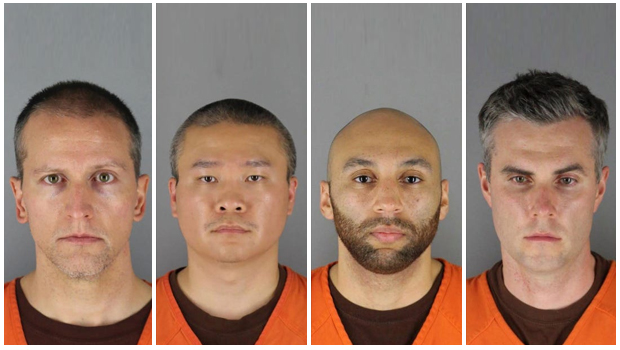

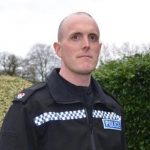

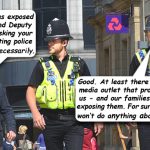
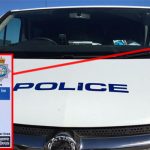


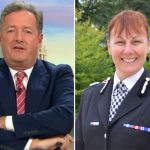
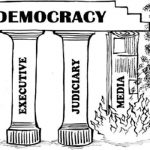
















Comments are closed.